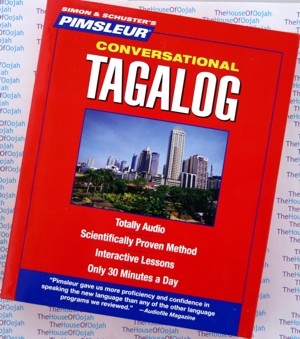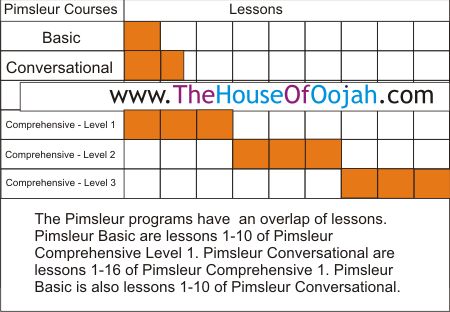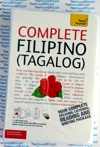Pimsleur Conversational Tagalog Language 8 Audio CDs -Discount - Learn to Speak Tagalog

Pimsleur Conversational TagalogTotally Audio - only 30 minutes a day8 CDs Learn to Speak with other Pimsleur Foreign Language Learning click hereGet other Tagalog Language Learning Audio Book CDs click here |
 |
Pimsleur Conversational Tagalog - Learn to Speak Tagalog - 8 Audio CDsBrand New : 8 CDs - Note this package includes the first 5 CDs of Pimsleur Basic Tagalog The Pimsleur Method provides the most effective language-learning program ever developed. The Pimsleur Method gives you quick command of Tagalog structure without tedious drills. Learning to speak Tagalog can actually be enjoyable and rewarding.
The key reason most people struggle with new languages is that they aren't given proper instruction, only bits and pieces of a language. Other language programs sell only pieces — dictionaries; grammar books and instructions; lists of hundreds or thousands of words and definitions; audios containing useless drills. They leave it to you to assemble these pieces as you try to speak. Pimsleur enables you to spend your time learning to speak the language rather than just studying its parts. When you were learning English, could you speak before you knew how to conjugate verbs? Of course you could. That same learning process is what Pimsleur replicates. Pimsleur presents the whole language as one integrated piece so you can succeed. With Pimsleur you get:
Millions of people have used Pimsleur to gain real conversational skills in new languages quickly and easily, wherever and whenever — without textbooks, written exercises, or drills About Tagalog Tagalog is one of the major languages of the Republic of the Philippines. It is the most spoken Philippine language in terms of the number of speakers. Tagalog, as its de facto standardized counterpart, Filipino, is the principal language of the national media in the Philippines. It is the primary language of public education. As Filipino, it is, along with English, a co-official language and the sole national language. Tagalog is widely used as a lingua franca throughout the country, and in overseas Filipino communities. However, while Tagalog may be prevalent in those fields, English, to varying degrees of fluency, is more prevalent in the fields of government and business. Tagalog History The word Tagalog derived from tagá-ílog, from tagá- meaning "native of" and ílog meaning "river", thus, it means "river dweller." There are no surviving written samples of Tagalog before the arrival of the Spanish in the 16th century. Very little is known about the history of the language. However, according to linguists such as Dr. David Zorc and Dr. Robert Blust, the Tagalogs originated, along with their Central Philippine cousins, from northeastern Mindanao or eastern Visayas The first known book to be written in Tagalog is the Doctrina Cristiana (Christian Doctrine) of 1593. It was written in Spanish and two versions of Tagalog; one written in Baybayin and the other in the Latin alphabet. Throughout the 333 years of Spanish occupation, there have been grammars and dictionaries written by Spanish clergymen such as Vocabulario de la Lengua Tagala by Pedro de San Buenaventura (Pila, Laguna, 1613), Vocabulario de la lengua tagala (1835) and Arte de la lengua tagala y manual tagalog para la adminstración de los Santos Sacramentos (1850). Poet Francisco "Balagtas" Baltazar (1788-1862) is regarded as the foremost Tagalog writer. His most famous work is the early 19th-century Florante at Laura. In 1937, Tagalog was selected as the basis of the national language by the National Language Institute. In 1959, Tagalog, which had been renamed Wikang Pambansa ("National Language") by President Manuel L. Quezon in 1939, was renamed by the Secretary of Education, Jose Romero, as Pilipino to give it a national rather than ethnicity label and connotation. The changing of the name did not, however, result in better acceptance at the conscious level among non-Tagalogs, especially Cebuanos who had not accepted the selection. In 1971, the language issue was revived once more,and a compromise solution was worked out — a ‘universalist’ approach to the national language, to be called Filipino rather than Pilipino. When a new constitution was drawn up in 1987, it named Filipino as the national language. The constitution specified that as that Filipino language evolves, it shall be further developed and enriched on the basis of existing Philippine and other languages.
|
Pimsleur Conversational Tagalog - Learn to Speak Tagalog - 8 Audio CDs |


 0 Items (Empty)
0 Items (Empty)


